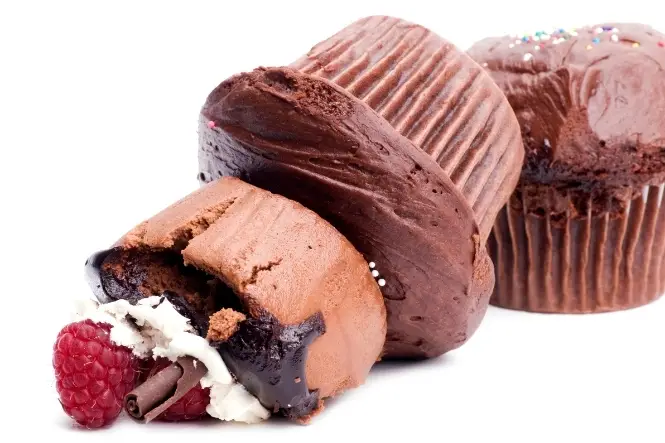Everybody has cake failures, but what separates the master baker from the average cook is the way that you deal with them. Burnt cake is almost impossible to rescue: because the burnt flavour tends to go right through the cake, even if the crumb itself isn’t burnt, but everything else can be restored, recreated or recycled into another, equally tasty, recipe. Don’t tell anybody it went wrong and you’ll get compliments on the versatility and range of your baking skills!
Failure 1 – The Cake Breaks
There are two ways that a cake can fracture. One is where a layer simply cracks in two, which can be rectified by rejoining the broken parts with apricot jam and then using a good layer of Lightweight Icing (anything too heavy can cause the join to pull apart again) like a whipped or butter-cream layer.
If the cake breaks the other way, into many small pieces, you can do one of two things: use the broken layer as a Topping or Filling.
Use the Crumble as a Topping
Crumble the broken layer entirely and mix with some honey or maple syrup and a little melted butter to make a barely sticky mass. Shape this mass into walnut sized balls with your fingers and chill, then dip them in melted chocolate and use them to decorate the other layer, after you’ve topped it with whipped cream. The cake will be just as tall as it should have been with two layers!
As a Filling
Line the original baking tin with clingfilm. Slice the remaining layer into two thinner layers, and spread each one with a layer of jam. Put one slice back in the baking tin with the jam side up. Whiz the broken layer in a food processor until it becomes crumbs and then put the crumbs in a bowl. Moisten them with a little alcohol or fruit juice and stir in the zest of an orange or a lemon and 2 tablespoons of ground almonds.
Spread this over the layer in the tin, using a spatula to press it down evenly, and chill with a plate on top of the crumbs and a weight on top of the plate to compress the crumbs. Turn out of the tin to finish. Whip some cream and top the crumb layer with cream before adding the final layer, jam side down, so that you have two layers, sandwiched with a layer of tasty ‘trifle filling’.
Failure 2 – Small Cakes Are Too Dry
If you’ve committed to Making Cupcakes or individual cakes and they become dry, peel away the cases, spike the tops of the cakes with a skewer. Heat some lemon juice and sugar – you want around half a teaspoon per cake – until the sugar just melts, then add a teaspoon of glycerine. Pour half a teaspoon over the top of each cake and set aside while you melt some dark coating chocolate. Coat each drizzled cake on all sides with the chocolate and leave to set. This ‘traps’ the moisture into the cakes, making them luscious and tangy again.
Failure 3 – A Large Cake is Too Dry
The easiest way to revive a large cake is the same skewer and liquid method as used for small cakes. Choose from fresh fruit juice or alcohol to pour over the cake – if you use spirits, leave the cake for 24 hours before icing. Alternatively, you can heat some jam with hot water and pour it over the cake. Leave for 24 hours before icing. Use cream, custard, ice-cream or a cream cheese and icing sugar blend to coat the cake as all these toppings add moisture to the cake.


